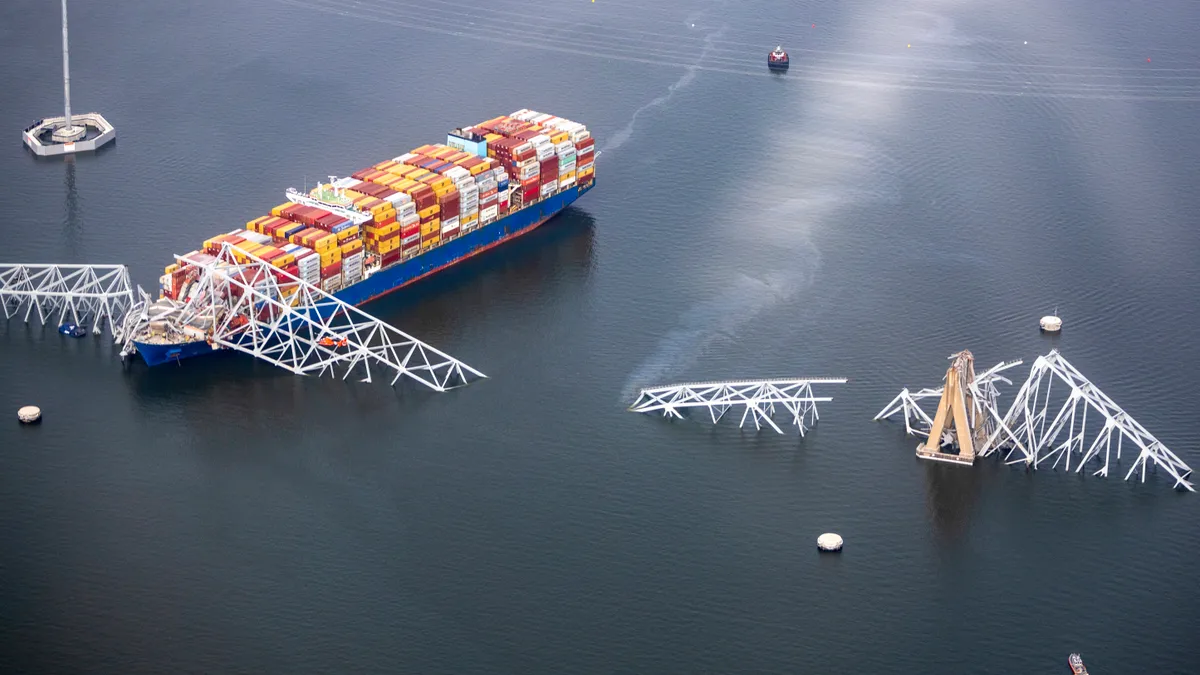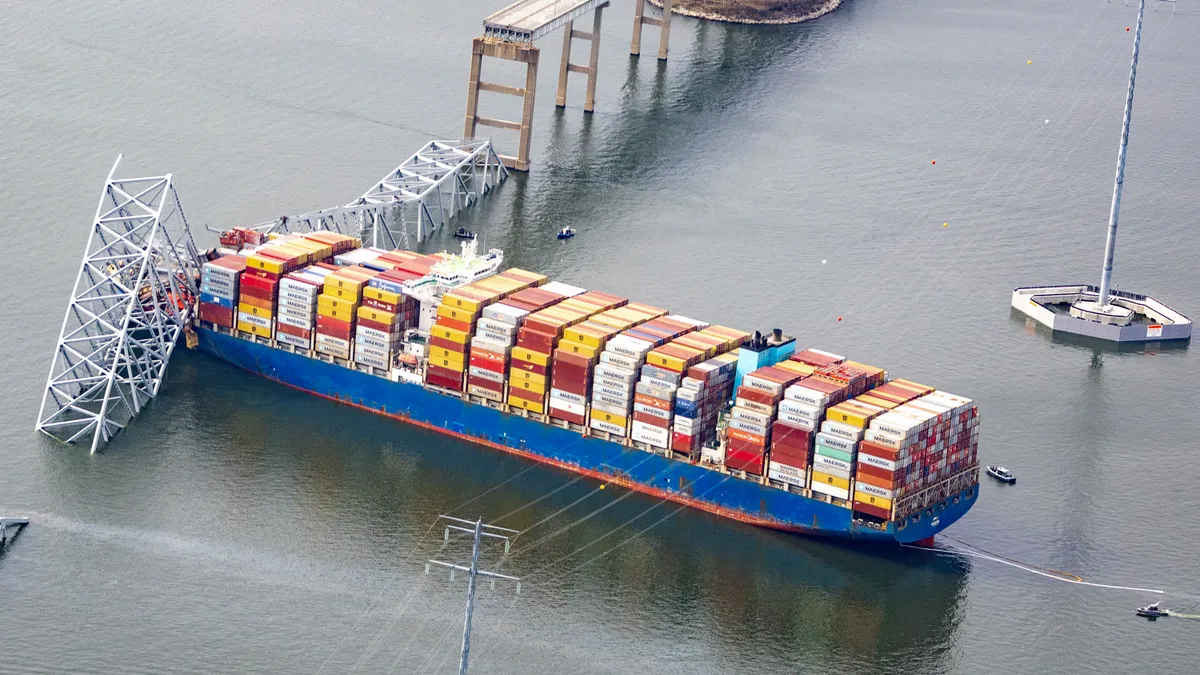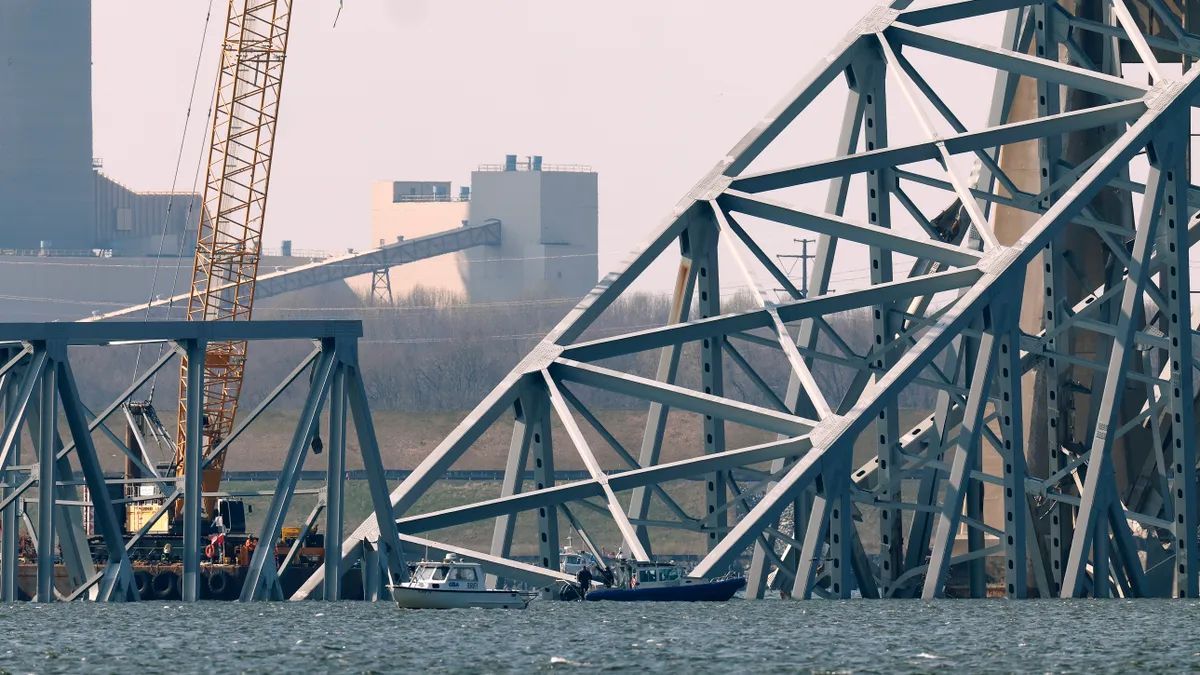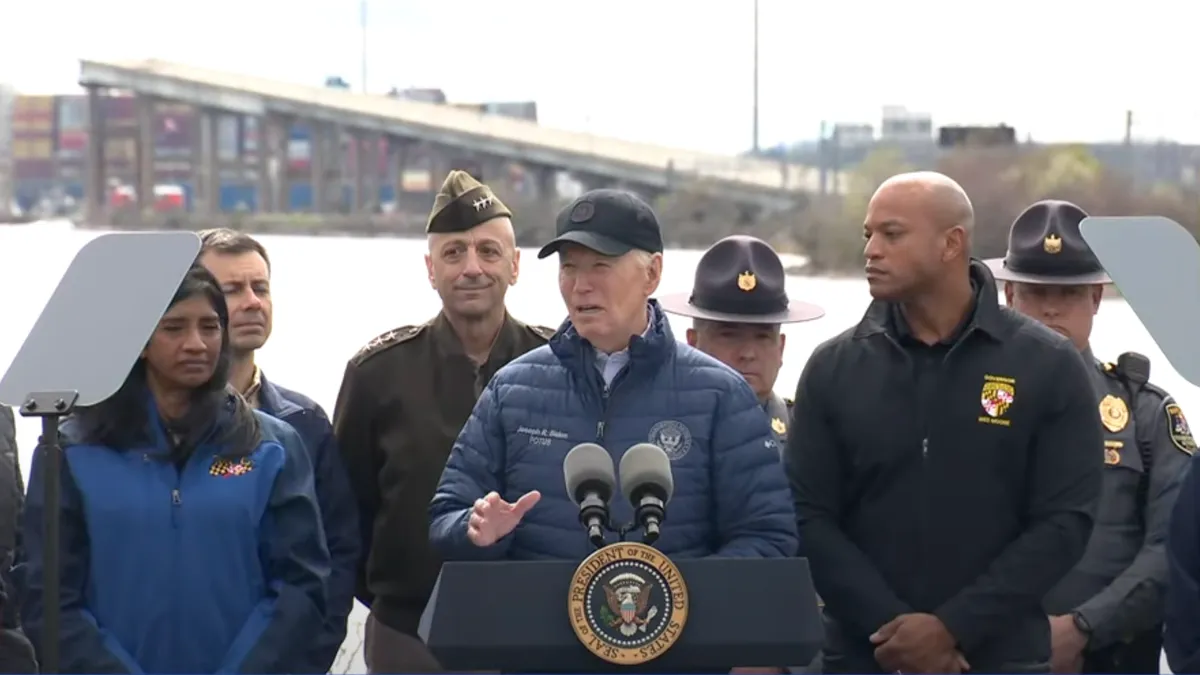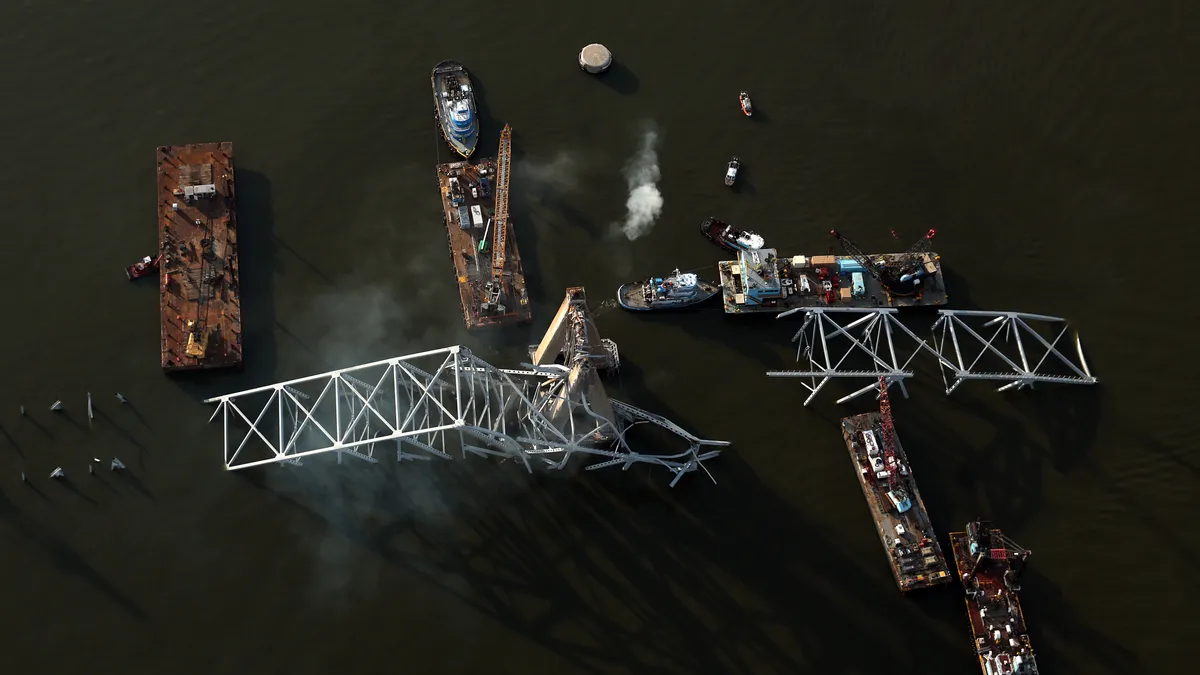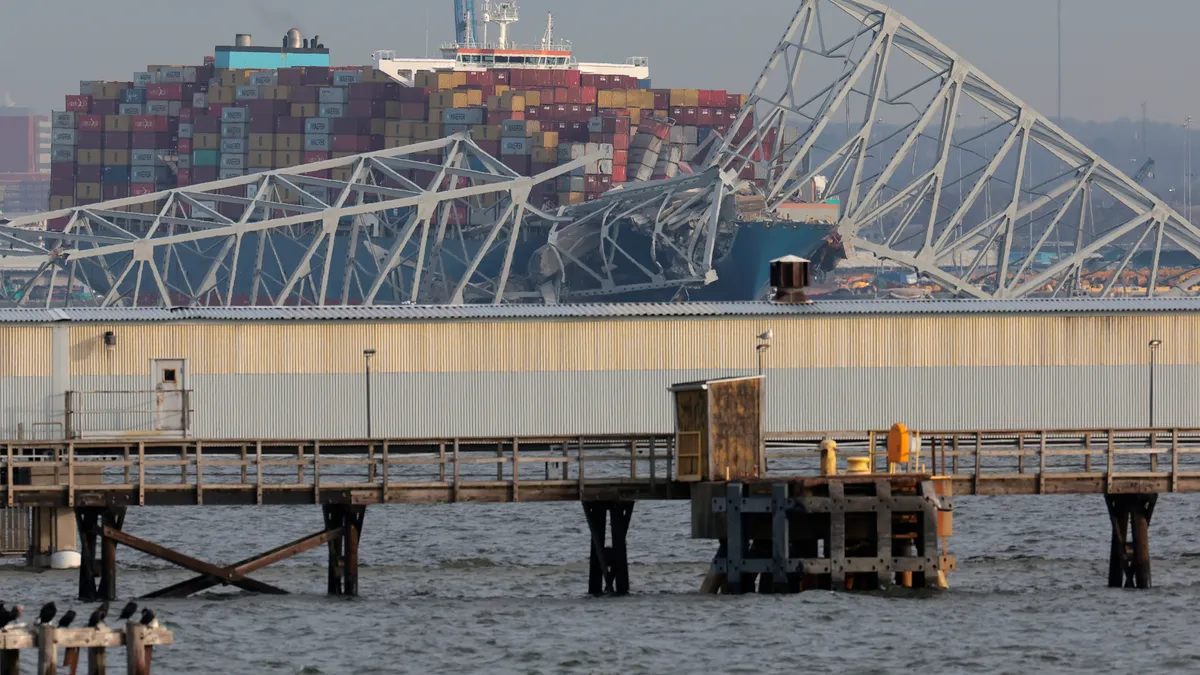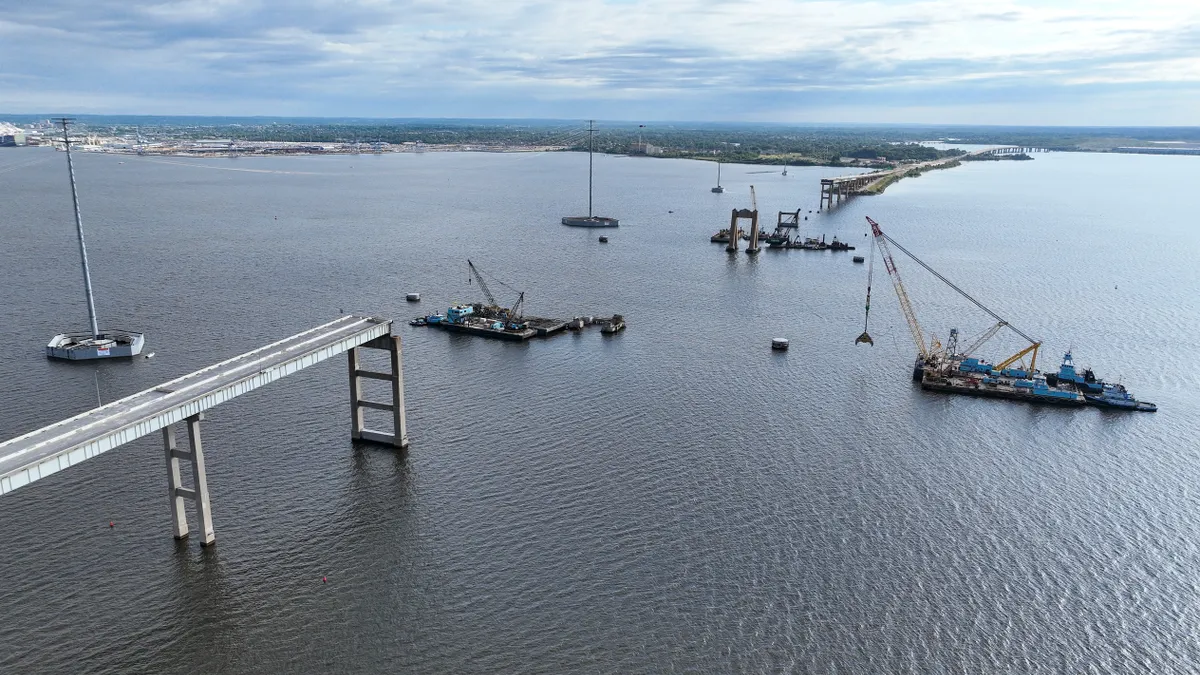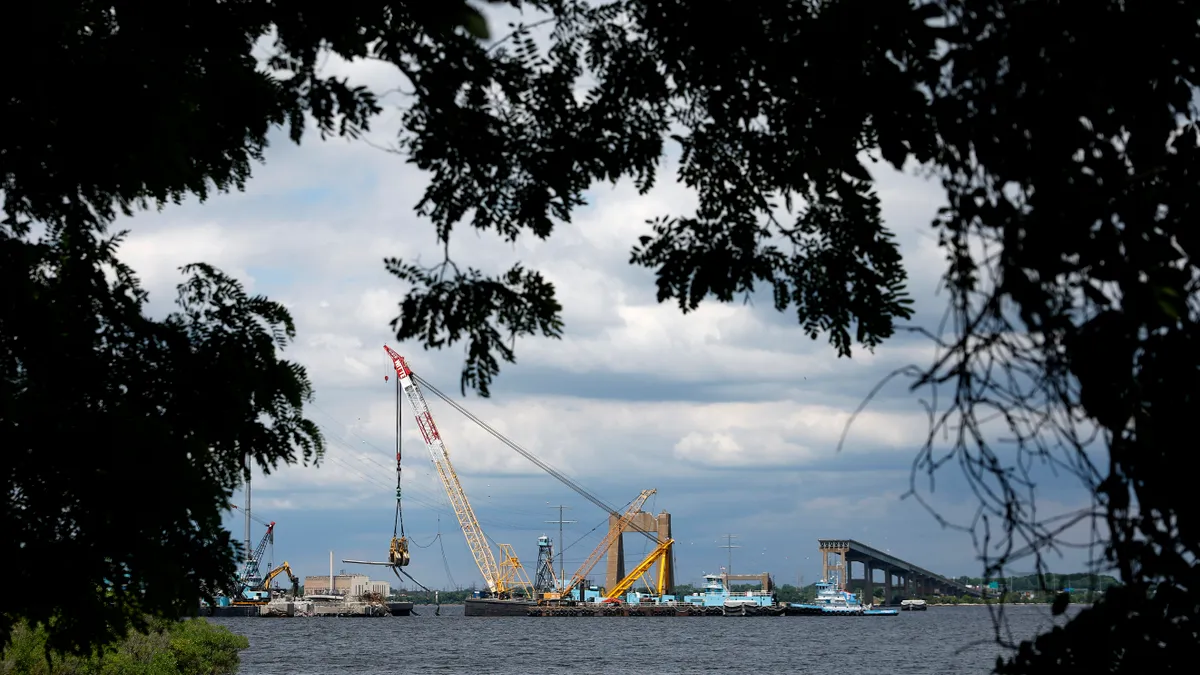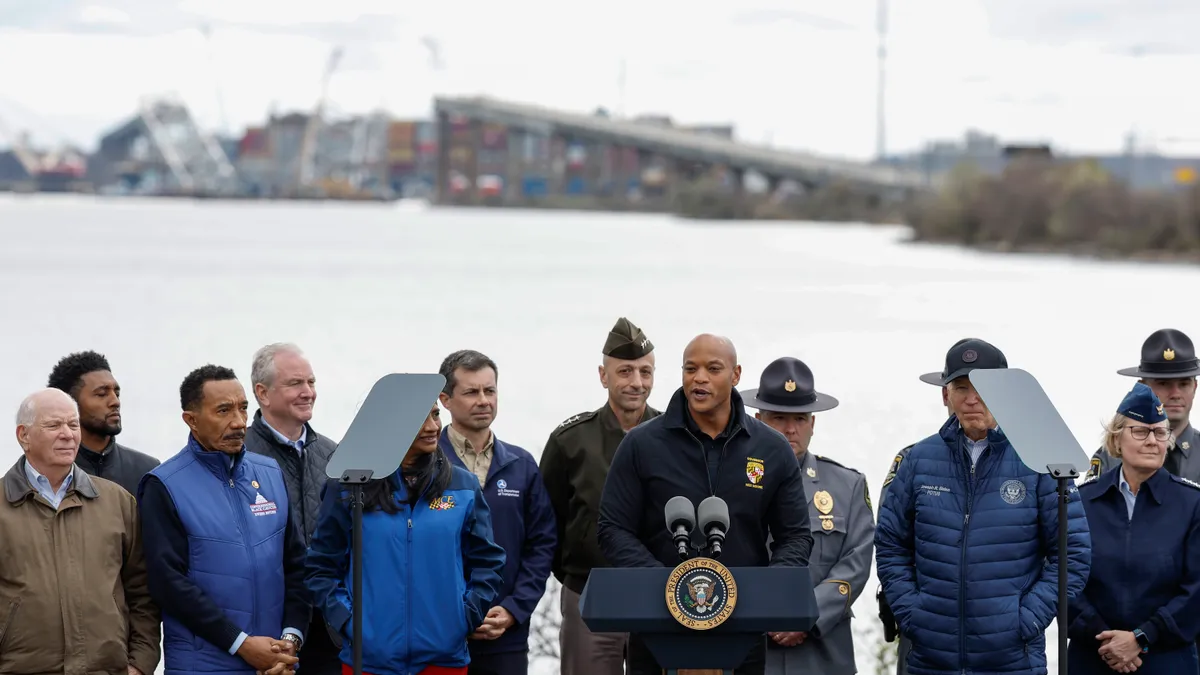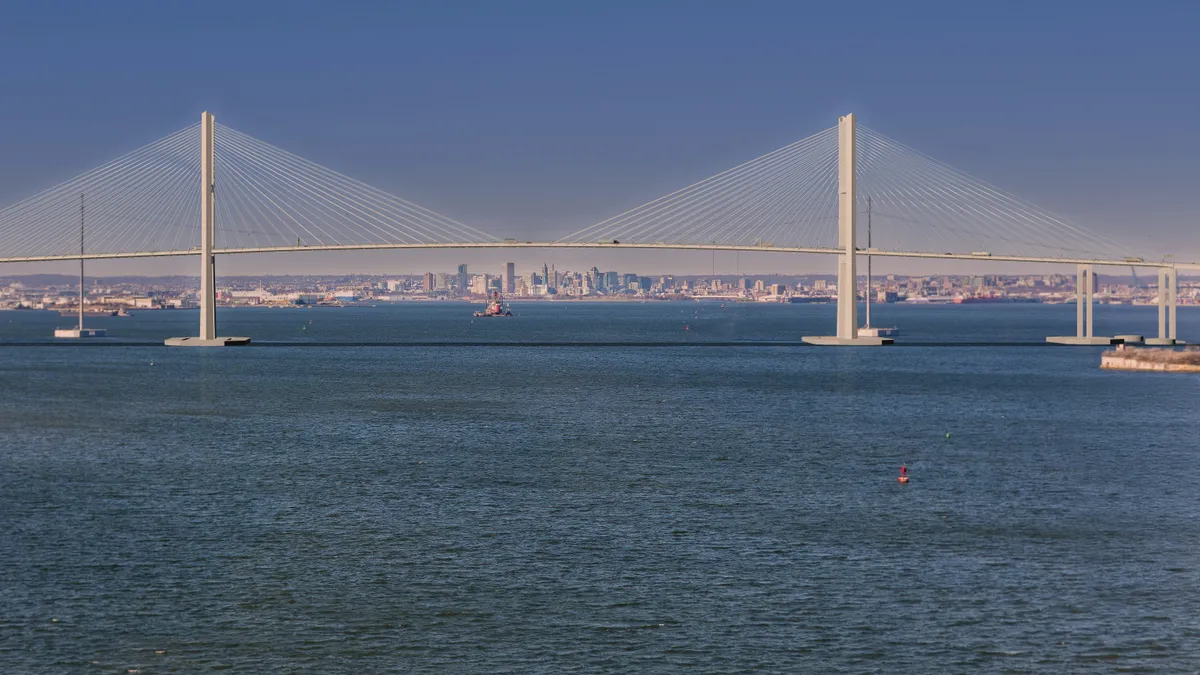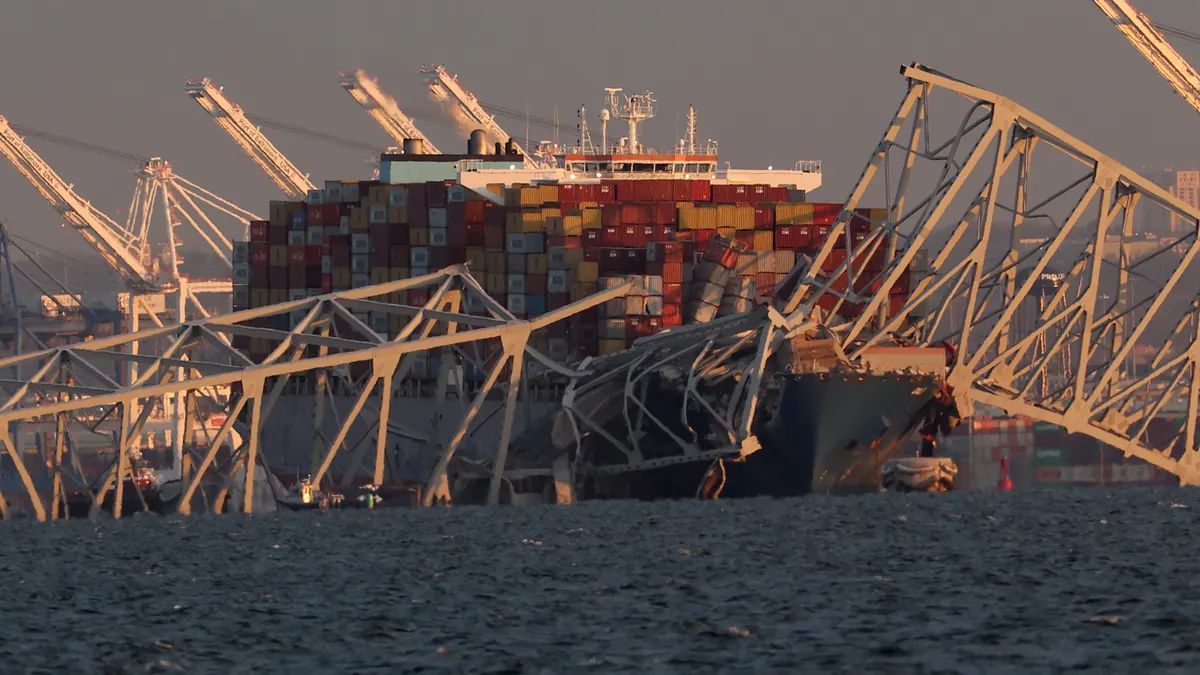Dive Brief:
- Baltimore’s Key Bridge had protections in place, but not ones sufficient to stop a head-on collision from a cargo ship like the one that occurred Tuesday, according to civil engineering experts.
- The bridge, which collapsed into the Patapsco River Tuesday after one of its load-bearing piers was struck by the container ship Dali, appeared to have concrete dolphins, also known as pilings or bollards, in place to protect it, according to experts who examined photos of the site.
- “So the protections are that you have those bollards strategically placed around the pier so you don’t have a direct impact,” K.N. Gunalan, a senior vice president at AECOM and past president of the American Society of Civil Engineers, told Construction Dive. “[The Key Bridge] had some protections but not to withstand an impact of this size.”
Dive Insight:
Safeguarding a bridge against a major collision with a container ship is not “economically feasible,” Ben Schafer, professor of civil and systems engineering at Johns Hopkins University said during a Wednesday call with reporters. Schafer called the Key Bridge protections “modest,” saying “something like a small fishing vessel or a pleasure cruise wouldn't be able to hit the piers directly.” The Dali weighs 95,000 tons empty.
When the Key Bridge was built in 1977, bridge designers would not have planned for a strike from a ship the size of the Dali, Gunalan said, as they wouldn’t have expected a collision of that magnitude.
Rachel Sangree, associate teaching professor at Baltimore-based Johns Hopkins civil and systems engineering department, agreed with Schafer on the feasibility of protections against a ship like the Dali.
“I'm not sure that something could have practically been constructed to withstand that direct hit,” Sangree said on the Wednesday press call.
Action plan
Wednesday morning, divers recovered two bodies from a red pickup truck under 25 feet of water, the Washington Post reported.
First responders’ efforts to find four remaining construction workers missing since the collapse has transitioned from a rescue to a recovery mission. U.S. Coast Guard Rear Adm. Shannon Gilreath said “we do not believe that we are going to find any of these individuals still alive,” due to the temperature of the water and time elapsed, Axios reported.
On Tuesday, the ASCE announced that it is developing an action plan to better protect people in the event of a similar collision, though it did not release any details of the plan.
Gunalan said that the collision will change how U.S. bridges are designed, built and protected, as standards regularly go under review and receive updates.
“This definitely is going to be a lesson learned,” Gunalan said, saying designs “definitely will be more robust.”



